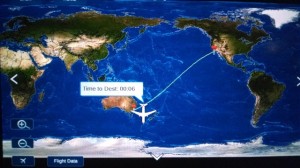 Just got back from more than a week in Australia. While work took me there, I was fortunate enough to take my wife Stacie and spend a few days exploring the bush, learning from the Aborigines, and hitting some of the tourist attractions.
Just got back from more than a week in Australia. While work took me there, I was fortunate enough to take my wife Stacie and spend a few days exploring the bush, learning from the Aborigines, and hitting some of the tourist attractions.
For this report I will break it into four parts. First, the bush track (trail) that Stacie and I took to get to the Red Hands Cave; second, our visit to an Aboriginal Cultural Center; third, some of the more popular local attractions; and finally, a traditional Australian bush recipe. But before I get into any details of the trip, I can’t say enough good things about Australia and her people. Everyone we met was extremely friendly and their casual approach to life refreshing! I intend to go back someday very soon with the whole family.
BUSH TRACK
Doing a little research ahead of our visit, my wife had us going to the Blue Mountains to see the Red Hands cave paintings. For those into primitive cultures and technology, these stencils represent that and so much more.
It didn’t take long to get used to driving on the lefthand side of the road. This was a good thing as The Blue Mountains are located 30+ miles inland from Sydney, Australia’s largest city on the southeast coast, where Stacie and I were staying. Aboriginal people have lived in Australia for 70,000+ years and for at least 14,000 years in the valley we now walked. More specifically, the Darug Tribe lived along both Campfire and Red Hands Creeks of which our bush track followed.
We welcomed the light intermittent rain on our four hour hike as it was warm and humid. No one but us were trekking this bush track on a weekday well outside the city. Everything being so new to us, we stopped often to observe the flora and fauna (especially birds). Frequent overhangs also offered opportunities to explore.
It’s hard to fathom when you put into context the difference between what we need to live today versus those that lived in this valley. Food, clothing, medicine, etc. come to us from the far corners of the earth. Food alone comes from the far reaches of our continent. Here along Campfire Creek, most needs were fulfilled within a short walking distance.
A few examples of these resources are:
- The caves and overhangs providing shelter from the rain and cold.
- Bracken Ferns were a good source of starch.
- The dried stalk of the grass tree made an excellent spear shaft.
- Grass tree also oozes out a resin from the trunk used as a glue to make tools and weapons.
- Tree hollows housed possums and sugar gliders (like a flying squirrel) which were both food and fur for clothing.
- Trees with stringy bark were used for cordage, huts and containers. I tested some for fire (in the rain) and they made an excellent tinder too!
- Berries and fruit (bush tucker) from the Geebung, Lilli Pilli, and Wild Cherry were also a part of the Darug diet here in this valley.
- Fish and the largest fresh water crustacean I have even seen, the yabby, were also on the diet. (I wish our crayfish were as large as the yabby!)
- Wood and bone served as the primary cutting tools for the Aborigines in this area as sedimentary rock was all that was available until much farther north.

Yabby we spotted in Red Hands Creek. He is larger than the picture portrays, click on it, then back.
The rear wall of the Red Hand Cave (more of an overhang) is covered in many hand stencils and prints, the first one appearing some 1,600 years ago. The hands were not all red either. They were painted in a range of red, orange, and white from a substance called ochre.
 Ochre is a prized possession of the Aborigines, found as either colored clay or rock, and as I learned from my new Aborigine friends (more on that later), only the men were allowed to touch.
Ochre is a prized possession of the Aborigines, found as either colored clay or rock, and as I learned from my new Aborigine friends (more on that later), only the men were allowed to touch.
To make the paint, the clay or rock was rubbed or crushed into a powder on a small grinding stone. Water was added to make a paste and if needed, animal fat added to get it to stick. If not used as a stencil, the whole hand was put into the ochre mixture then slapped against the wall. Very cool!
MURU MITTIGAR
For the first inhabitants of Australia, traditional areas are known as countries. The area we were in, the Blue Mountains, and all the way back to the coast, traditionally belong to the Darug people. In the Darug language, Muru Mittigar translated to English means, “Pathway to Friends.” A very appropriate name for the Aboriginal Cultural & Education Centre that Stacie and I were lucky enough to find. And while I said lucky, truly it was fate.
Muru Mittigar isn’t so much a tourist attraction. It is hub connecting people and the land on many different levels. We had the pleasure on our visit of watching a first grade school class learn about Aboriginal Culture hands on – lucky kids and one of many things they do at Muru Mittigar!
Stacie and I also had the pleasure of befriending Paul Teerman of Darug. I swear Paul is my ‘brother from another mother’ as we say here in the states, as Paul and I viewed the world very much the same way. We discussed numerous things about the culture, politics, skills, and resources of the area. We both left each other wishing for more time, as his interests include other Aboriginal Cultures. Eventually our time ended with an exchange of contact information and planned correspondence. Nonetheless, here are a few pictures from our visit.

Paul and myself outside the center. Paul is holding the flower stalk of the grass tree. The flower stalk was used as a spear.
I can’t say enough good things about Muru Mittigar, especially Paul and Sharon. Thank you!
THE TOURISTS
I am backroads kinda guy. I love exploring and purposely avoid the touristy things when visiting anywhere, foreign or domestic. However, in the essence of time and with some things just being too cool, a day is usually spent being the typical tourist…
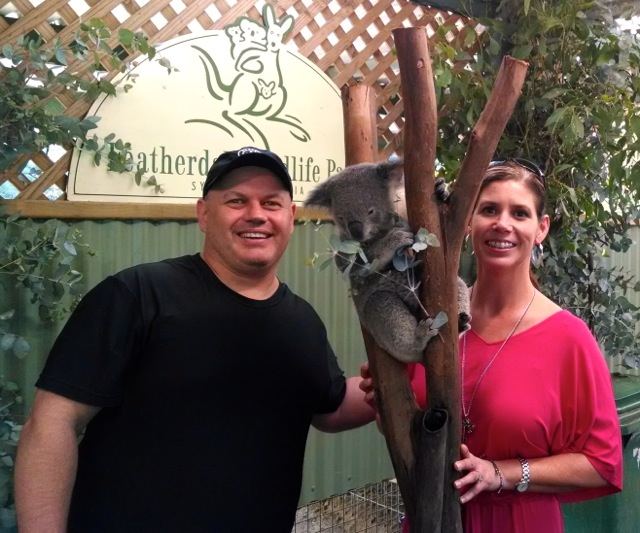
Who doesn’t want to pet a Koala? Also called “Drop Bears” in Australia. Featherdale Wildlife Park.

Laughing Kookaburra. My favorite bird is the Kingfisher of which the Kookaburra is in the same family.
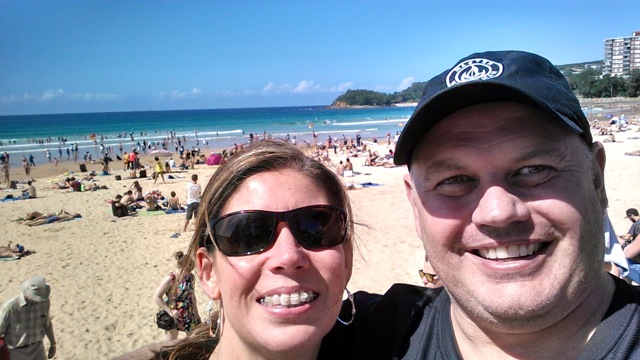
Manly Beach. Visited by English Captain Arthur Phillip in 1788, he was impressed by “the confidence and manly behavior” of a group of Aborigines on the northern end, the name stuck.

Going by Sydney Opera House on a harbor dinner cruise. We visited the Opera House earlier, it is huge!
http://youtu.be/Gf_06Cj1-B0
BILLY TEA & DAMPER
Below is one of many recipes from a younger Australia when more folks lived in the ‘bush,’ Billy Tea & Damper. Damper is very similar to our bannock.
Bring the billy to the boil over a hot fire. Use a stick to lift off the fire, remove the lid, (don’t burn your fingers)! Return to the fire until if bubbles again, remove, then toss in a palm of tea leaves and wait until it’s brewed.
For a change of flavour, leave the lid off when boiling to add a smoky taste or toss in a couple of gum leaves for that dash of eucalyptus.Damper is the Australian Bushman’s bread. The basic recipe is 1 large cup S.R. flour plus a generous pinch of salt and a scant 1/4 cup of water. (Too much and it’s like an old boot). Dig a foot-deep hole near the fire and add two shovelfuls of hot coals and ash. Use either a camp oven or metal foil (greased) to contain the damper in the hole. During cooking the dough increases in volume by 1/3 to 1/2.
Maximum cooking time is 40 minutes. If the coals are too hot, the outside of the damper will be burnt, the inside raw. If uncooked, you’ll get a flat rubbery mess.
Don’t give up if the first is inedible, after a few tries, you’ll be an expert.
If you enjoyed this article in the least bit, you will really like to see this post about a ‘human race’ in the Australian Outback . A German Survivalist in his early 60′s, an American marathon runner in his mid 30′s, and an Aborigine in his 70′s make a 300+ mile foot race across Australia. As the modern vs. traditional debate has come up lately on other blogs, the “Human Race” lends food for thought.


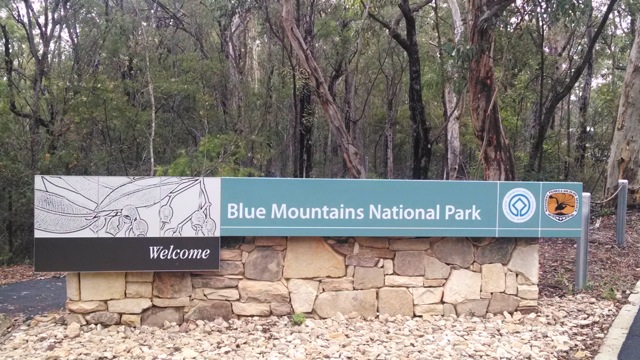





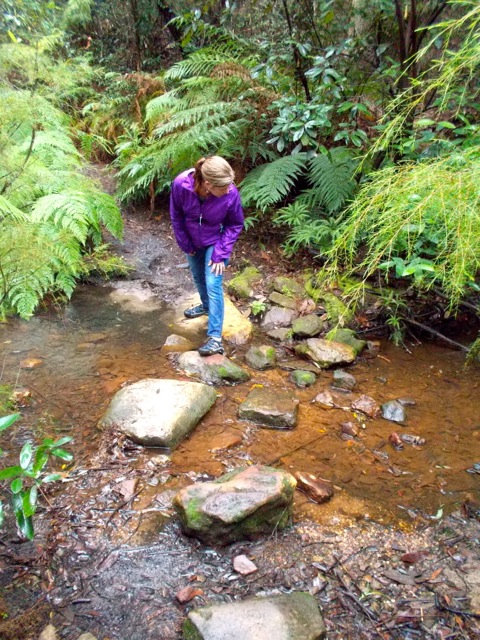

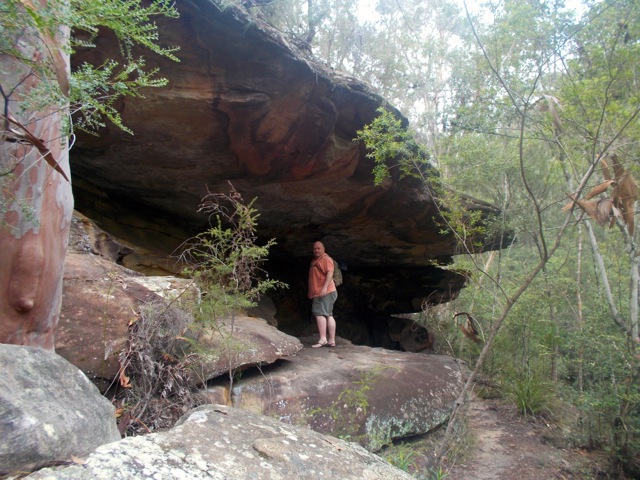
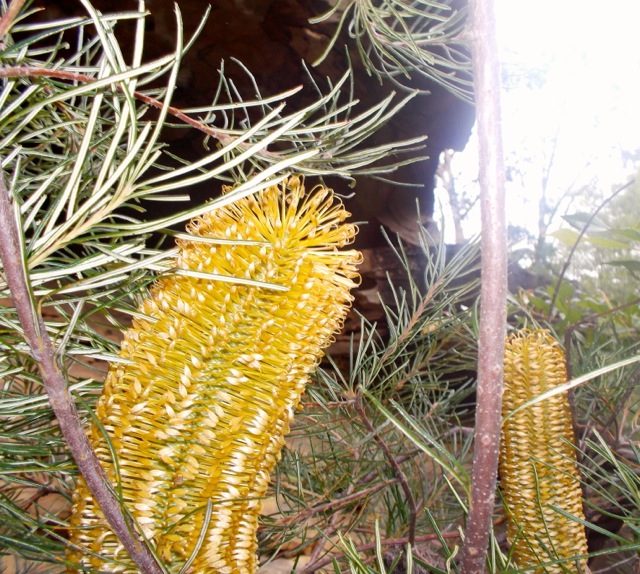
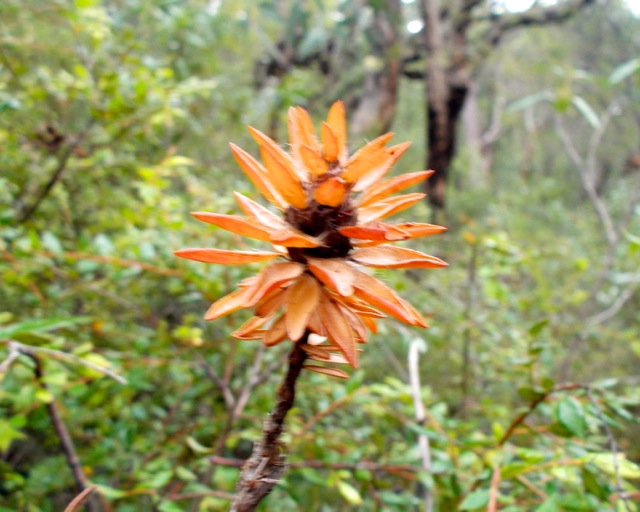

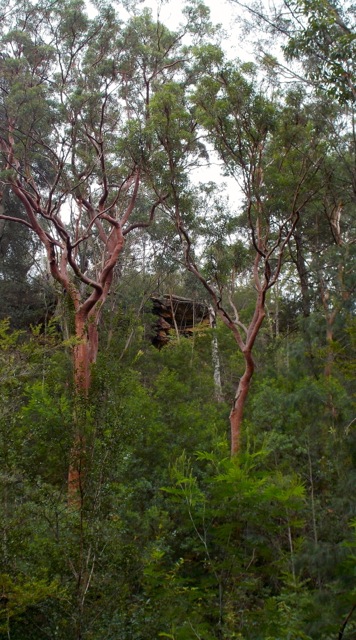
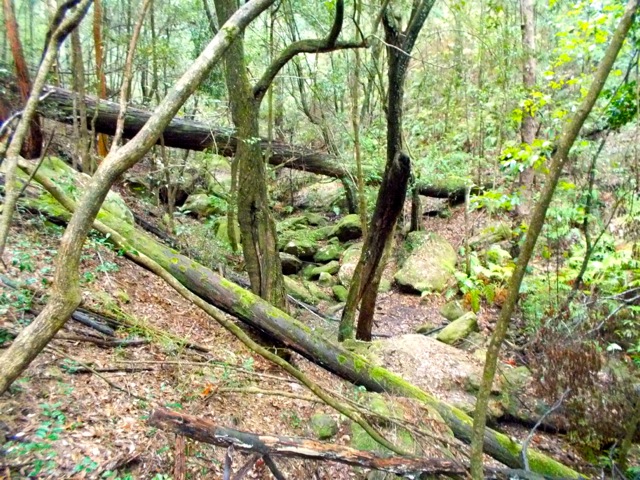

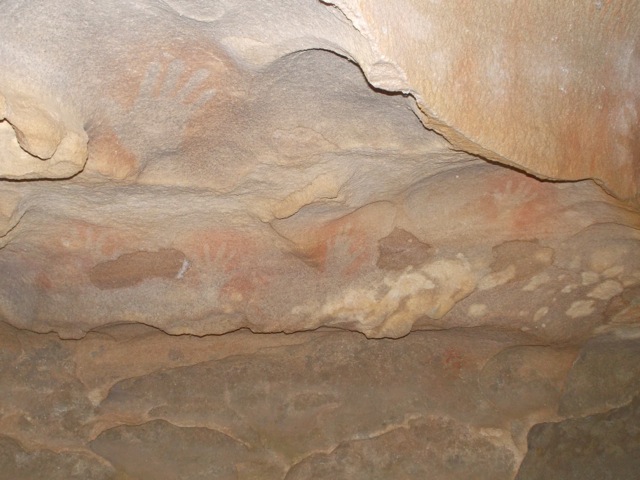
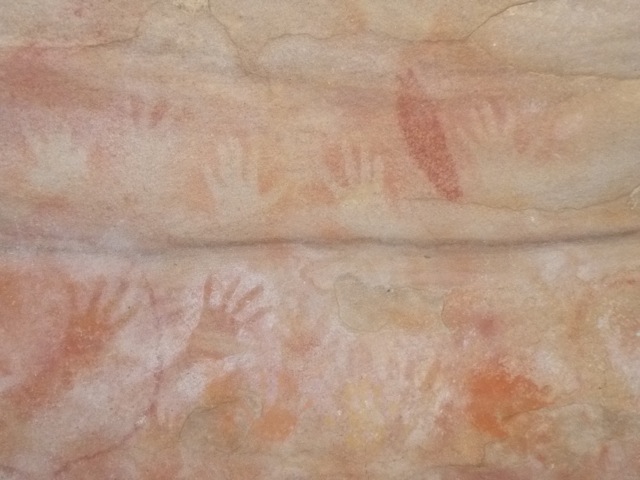

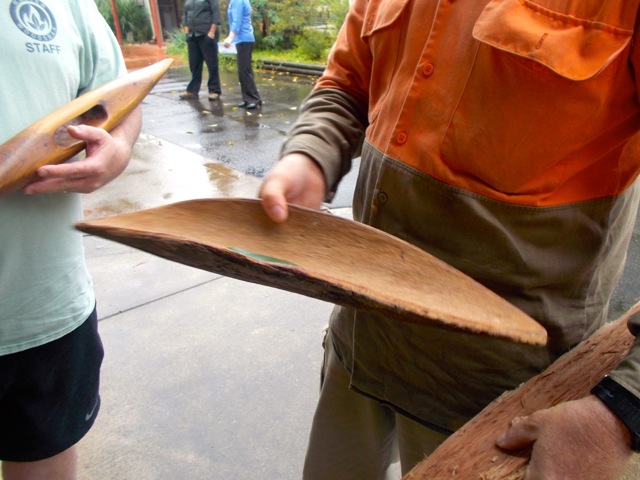
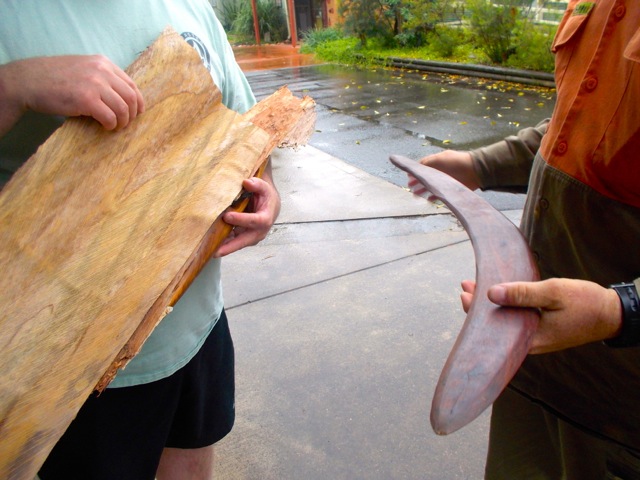
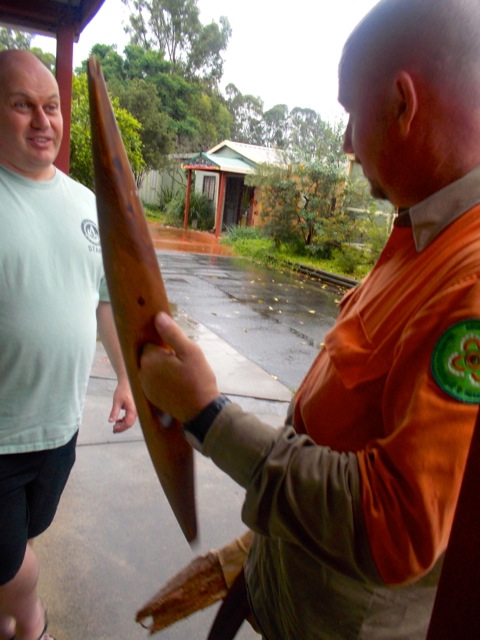



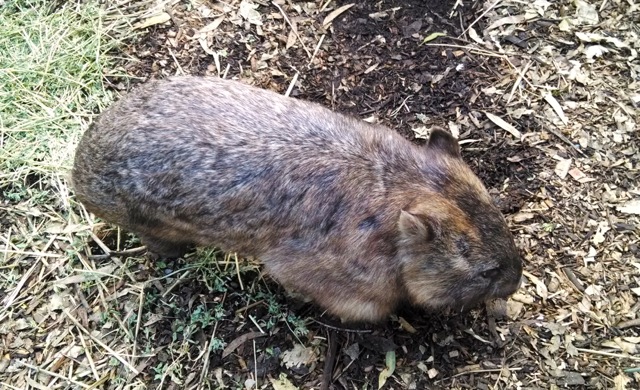
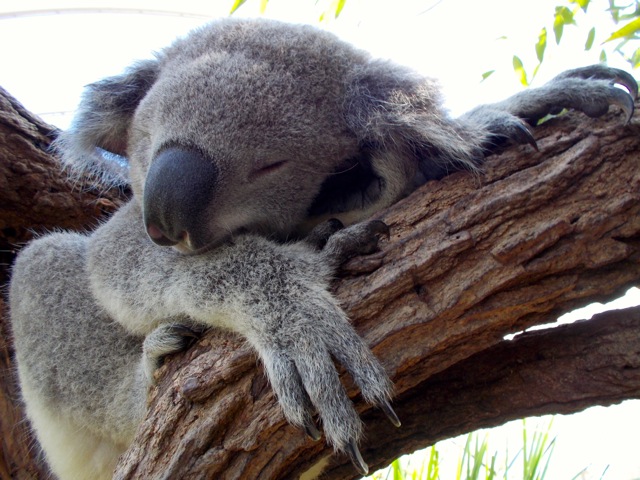




10 Responses to Trip Report: Australia